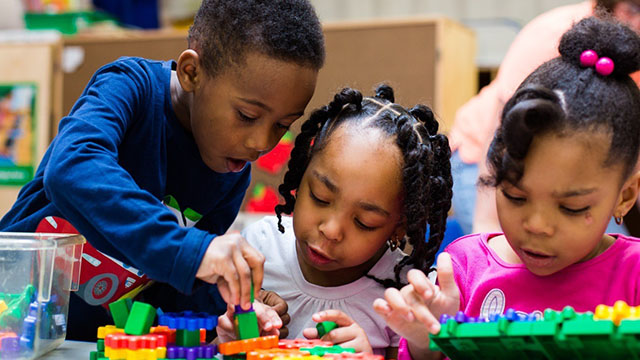Play is the primary way that children learn. Through play children explore their bodies, their relationship with parents, friends and the world around them. 3-5-year-old children love imaginary play and they love to sing and dance. They love to make up stories and act them out with other children. They love to hear stories told or read by an older child or adult. They love to draw and play with clay and craft materials. For children in this age range, “play”is a more developmentally appropriate channel of learning than formally structured learning.
For the 21st Century child, critical thinking and creativity are some of the key skills your child needs.
Here is a list of toy ideas to help your pre-schooler PLAY and LEARN
•Problems solving-Things like puzzles (with 12 to 20+ pieces), blocks that snap together helps the children come together for solutions
• Pattern creations- Collections of small objects to sort by length, width, height, shape, colour, smell, quantity, and other features; e.g., plastic bottle caps, plastic bowls and lids, keys, shells, small coloured blocks
• Child’s development- For pretending and building blocks for building complex structures, transportation toys, construction sets, child-sized furniture (“apartment” sets, play food), dress-up clothes, dolls with accessories, puppets and simple puppet theatres, and sand and water play toys
•Crafts- Things to create with like crayons and markers, paintbrushes and finger-paint, paper for drawing and painting, coloured construction paper, preschool-sized scissors, chalk, modeling clay and play dough, modeling tools, paste, cloth scraps or other materials for collage
• Musical instruments -Things to make music with rhythm instruments and keyboards, shekere , tambourine etc
• Picture books – Picture books with more words and detailed pictures than toddler books
• Fine motor skills- Using their muscles large and small balls for kicking and throwing/catching, swings, ride-on equipment including tricycles and wagons, tunnels, wheelbarrows, plastic bats and balls, plastic bowling pins, targets and things to throw at them
• Computer access- If a child has access to a computer, programs that are interactive (the child can do something) and that children can understand (the software uses graphics and spoken instruction, not just print), children can control the software’s pace and path, and children have opportunities to explore a variety of concepts on several levels


